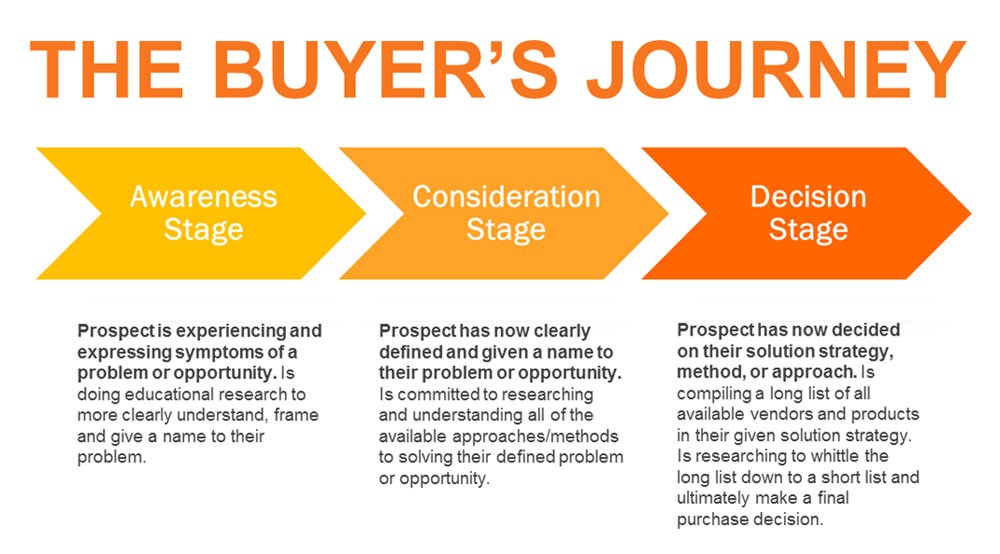 In today’s digital world, the potential customers are under a huge number of stimuli which makes harder the job of standing out and being able to reach them successfully.
In today’s digital world, the potential customers are under a huge number of stimuli which makes harder the job of standing out and being able to reach them successfully.
Potential customers are not a passive element in the buying process. Nowadays, they make well researched and well thought purchases, using the elements that the Internet provides them. If your product was not part of that process, you were out of it before it started.
That’s why there’s a switch from more traditional schemes of digital marketing to Inbound Marketing, in order to have a better chance with the potential customers to succeed.
A key in the Inbound Marketing tactics is something called “Buyer’s Journey”, in which the brand gets “in the client’s shoes” to understand them better and be able to connect with them. The Buyer’s Journey consists in three steps:

- Awareness: The client shows “symptoms” because of an issue or opportunity and express them, while researching about it to better understand it.
- Consideration: The client knows exactly what the problem is and searches actively for methods to solve it, analyzing and considering them.
- Decision: The client has already made a choice in regards of what method will use to solve the problem and now is deciding from a list of possible products which one should help with that choice to make a definite purchase selection.
The client that gets to reach your brand seeking for solutions could be in any step of the ones described above and could not experience them right in the order described. Because of this, an Inbound Marketing strategy that proves very useful is to generate content related to each one of the steps to be able to connect with the potential customer at any given step.
In the end, this strategy is all about getting to feel and think as the customer is feeling and thinking.
Related Article: ¿How to identify the different types of leads?
A great example of it is comparing that to the process a patient follows when visiting a doctor. One always expect to be heard when describing our symptoms and hopes for the doctor to come up with a solution tailored for our needs, and not just a “one size fits all” diagnosis which may or may not make us feel better.
That “one size fits all” diagnosis in marketing are the traditional schemes that reach “in cold” to the potential customers, such as massive emails, billboards, or even our online content itself, if it is not focused to our clients.
So let’s leave that behind and move forward with what the clients would expect from us, giving them the solutions they need by listening to them and being successful by going all the way during the buyer’s journey!



Comments
Currently, there are no comments. Be the first to post one!